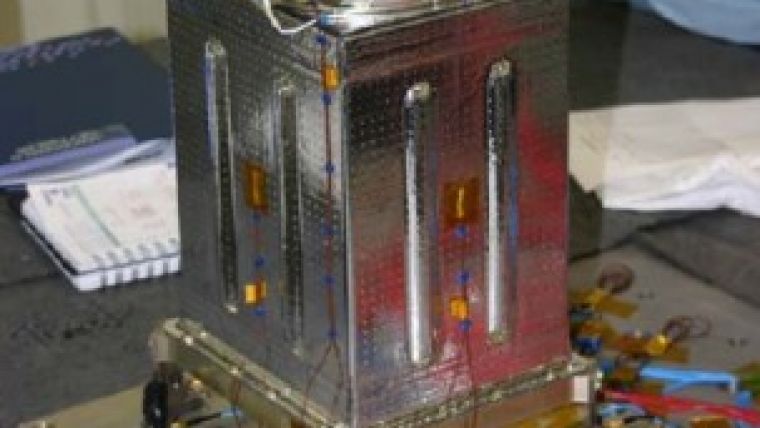Optech Lidar Technology Discovers Snow on Mars
Optech (Canada) lidar technology has detected snow on Mars. The discovery was made by the Optech-designed lidar system aboard NASA's Phoenix Mars Lander, which landed near the Martian North Pole on 25th May 2008 to search for water and environmental habitats that could harbour life. The snow was detected from clouds about 4 kilometers above the spacecraft's landing site, and data shows the snow vaporizing before reaching the ground. Spacecraft soil experiments have also provided evidence of past interaction between minerals and liquid water, processes that occur on Earth.
Optech lidar technology is at the heart of Canada's contribution to the Phoenix mission - a meteorological weather station that has helped accurately model Mars's climate and predict future weather processes. The Canadian Space Agency funded the contribution of the meteorological (MET) package to NASA, which was designed and built by Optech and MDA Space Missions with input from Canadian and US scientists. The Phoenix lidar bounces laser pulses off passing clouds and atmospheric dust overhead to determine their composition, movement and size.
Dr. Carswell was the original principal investigator for the Canadian MET and continues as a co-investigator on the Phoenix Science team. The Phoenix mission is led by the University of Arizona under the leadership of Dr. Peter Smith. Project management of the mission is led by NASA's Jet Propulsion Laboratory, Pasadena, California. Spacecraft development was by Lockheed Martin Space Systems, Denver.
By scanning and probing the Martian polar sky with lidar for the first time in history, scientists are seeing a variety of atmospheric activity in great detail, such as ice and dust clouds, ground fog, and even some dust devils and sand storms that fly across the landing site. To be able to pierce through most of the thin atmosphere, the laser is fixed in an upward-pointing orientation and works at two different wavelengths so that it can give accurate measurements of cloud height to within 10 meters. Though working only on a power equivalent to a 30-watt light bulb, the MET lidar has provided new information on altitudes up to 20 kilometers in the Martian atmosphere.
The Phoenix mission continues to reveal new secrets about Mars and its environmental processes, including proving the existence of frozen surface water and now snow on the red planet.
Caption: Phoenix Meteorological Station (MET)

Value staying current with geomatics?
Stay on the map with our expertly curated newsletters.
We provide educational insights, industry updates, and inspiring stories to help you learn, grow, and reach your full potential in your field. Don't miss out - subscribe today and ensure you're always informed, educated, and inspired.
Choose your newsletter(s)












